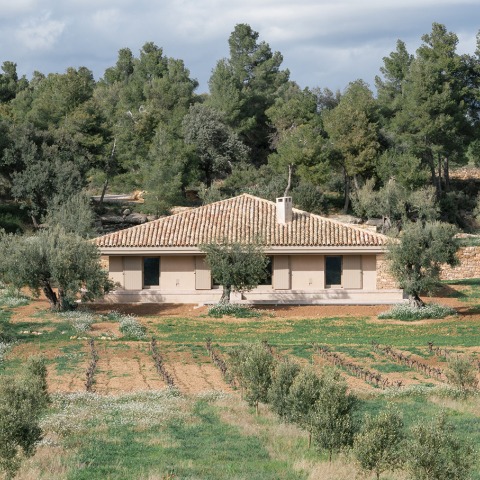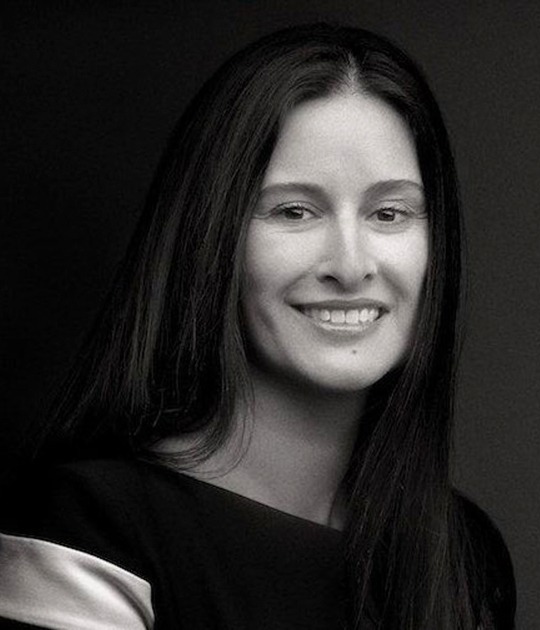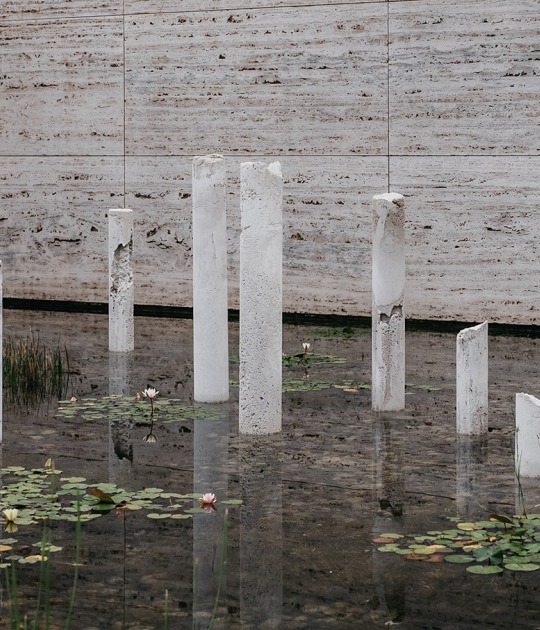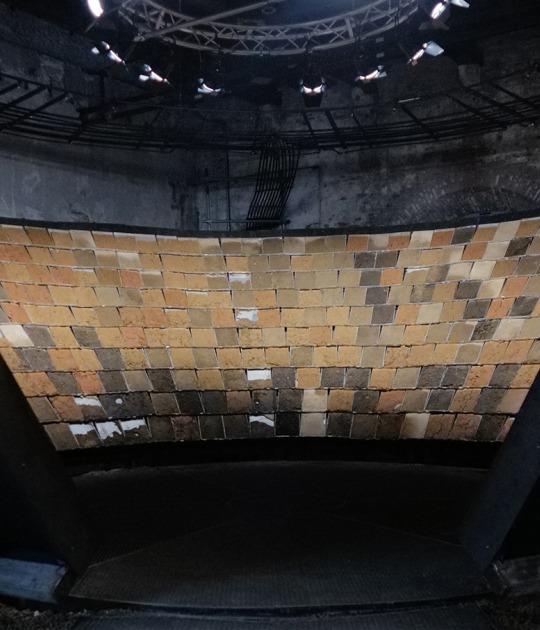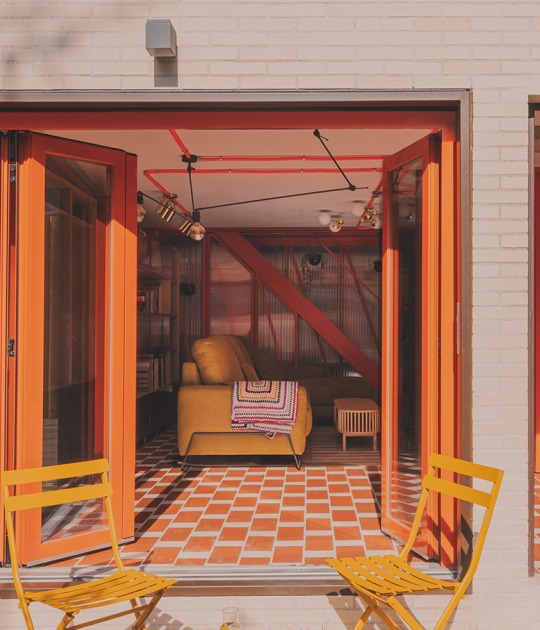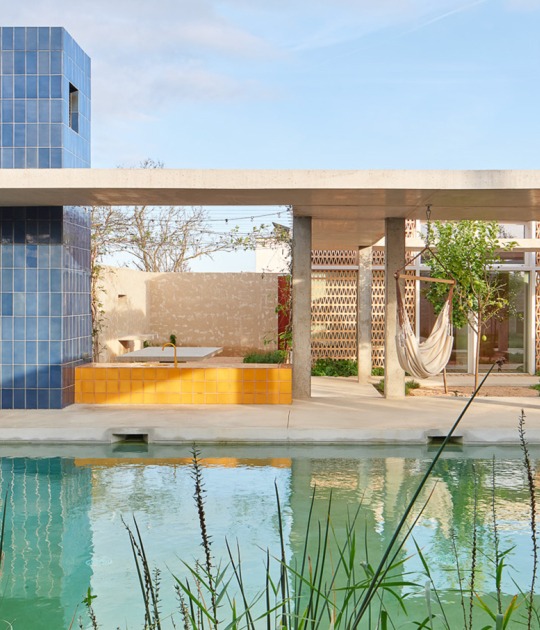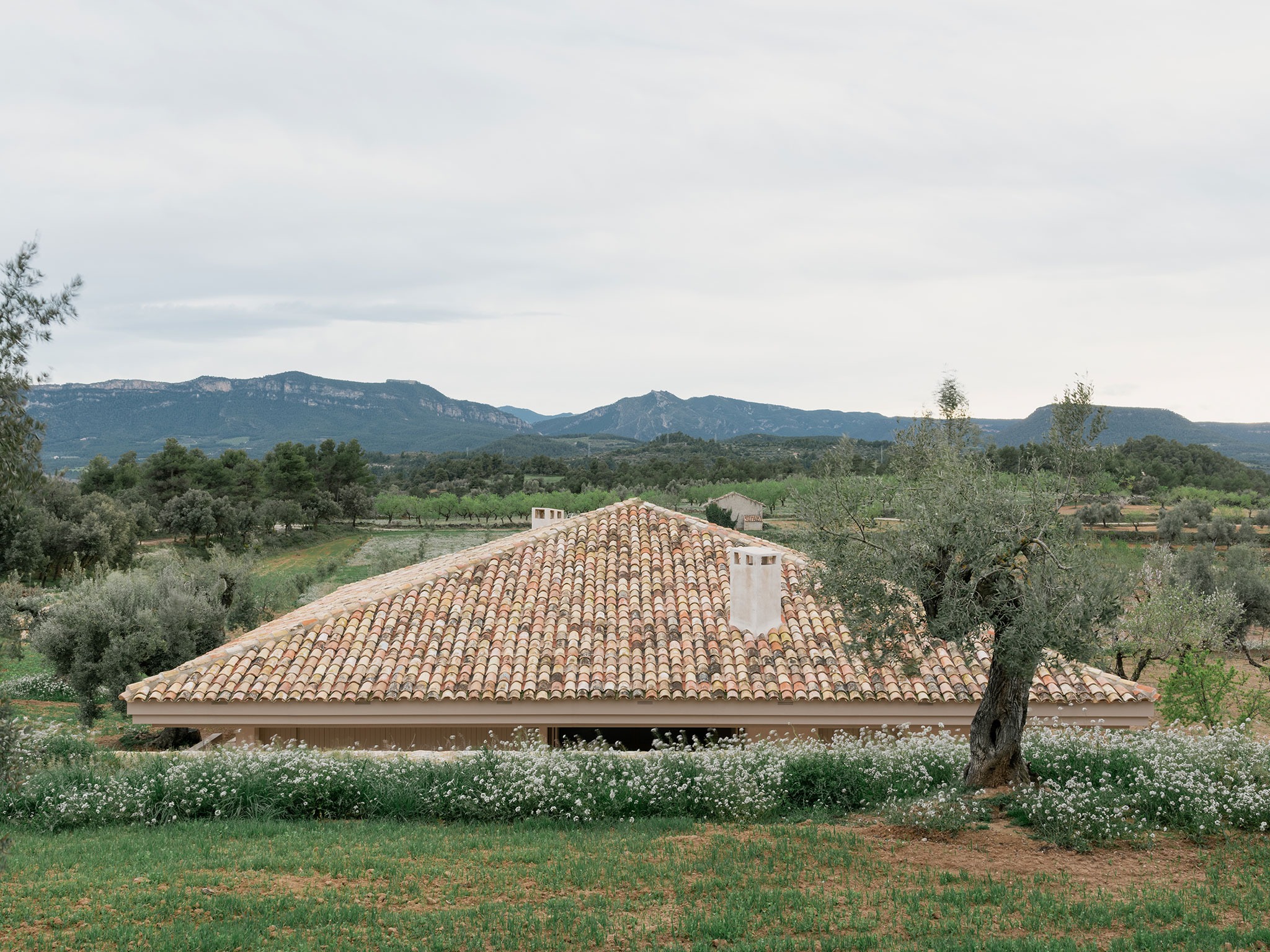
The home designed by María Díaz of MDBA is built on a single floor, articulated around a central axis that provides both a functional and visual structure. It differentiates three zones: bedrooms to the west, guests to the east, and a central core that houses the kitchen and common spaces. The design features a simple geometry that facilitates both meeting spaces and more private spaces.
The home employs local materials from the region, such as stone, chosen in soft, muted tones to blend with the landscape, natural untreated wood, and lime plaster. The structure is made of reinforced concrete and features lightweight interior partitions to allow for future layout changes. Skylights and glazing have been used to accentuate the connection between interior and exterior.
The project incorporates ancient passive energy strategies to make this a sustainable home, such as cross ventilation and optimized orientation.
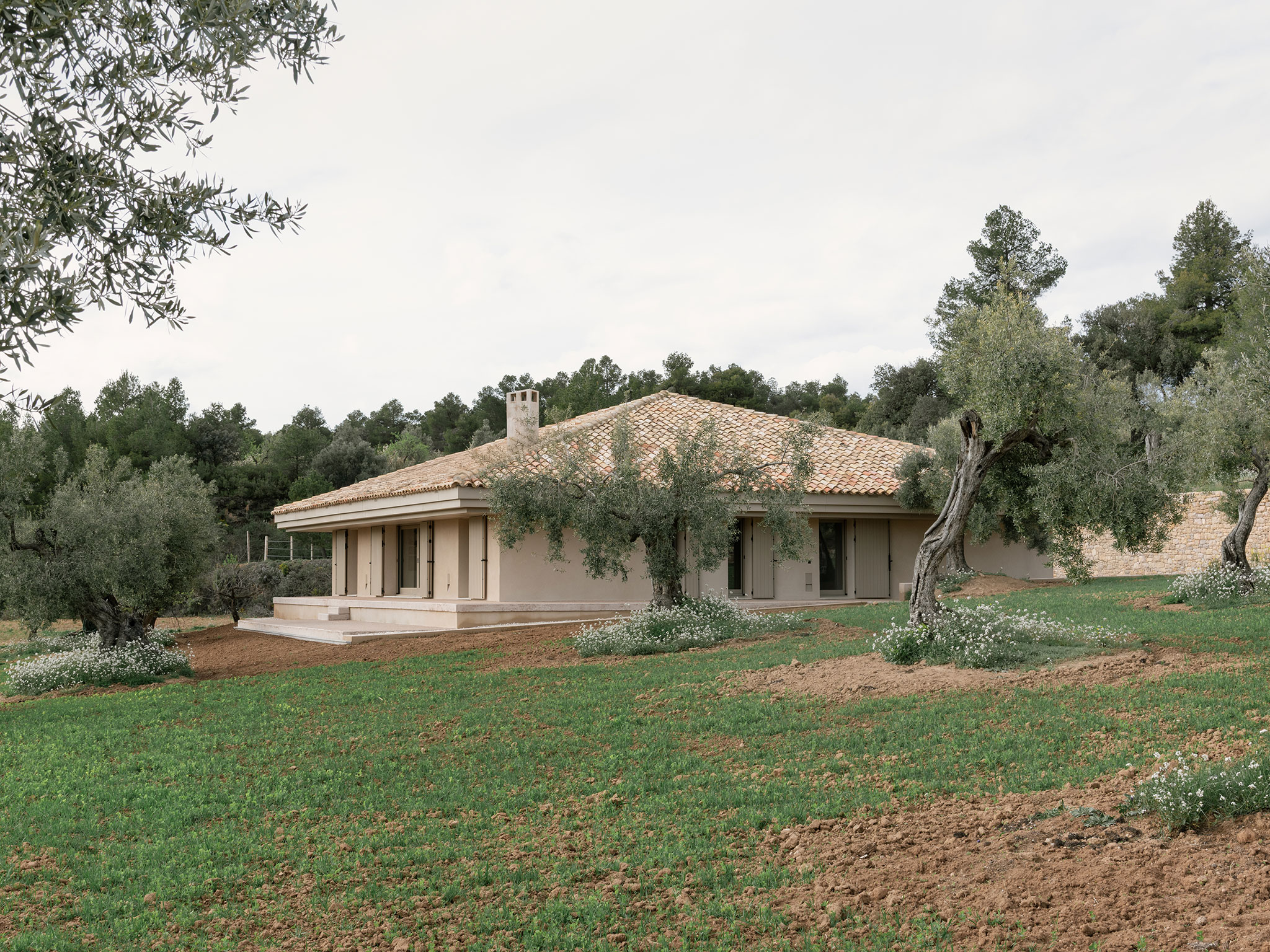
"Casa EF" by MDBA. Photography by Simone Marcolin.
Project description by María Díaz-MDBA
Casa EF is a private residence located in the rural setting of Valderrobres, in the province of Teruel, Spain. The house responds directly to its agricultural surroundings, where olive trees and vineyards define the landscape and inspired the spatial and material decisions of the project.
The single-storey home is composed around a central axis that serves as both a circulation spine and a visual frame. This axis organizes the floor plan into three distinct zones: a private bedroom wing to the west, a guest wing to the east, and a central shared core housing the kitchen and living spaces. The linear organization fosters a sense of flow while balancing privacy and community.

The materials are natural and regionally sourced - including lime plaster, untreated wood, and stone - all of which harmonize with the soft, muted tones of the landscape. The low-profile volume, along with large glazed openings and skylights, emphasizes the indoor-outdoor connection and invites natural light deep into the plan.
The structure is built using reinforced concrete with lightweight internal partitions, allowing for future flexibility. Passive design strategies were implemented to reduce energy consumption, including cross-ventilation, optimal solar orientation, and thermal mass.
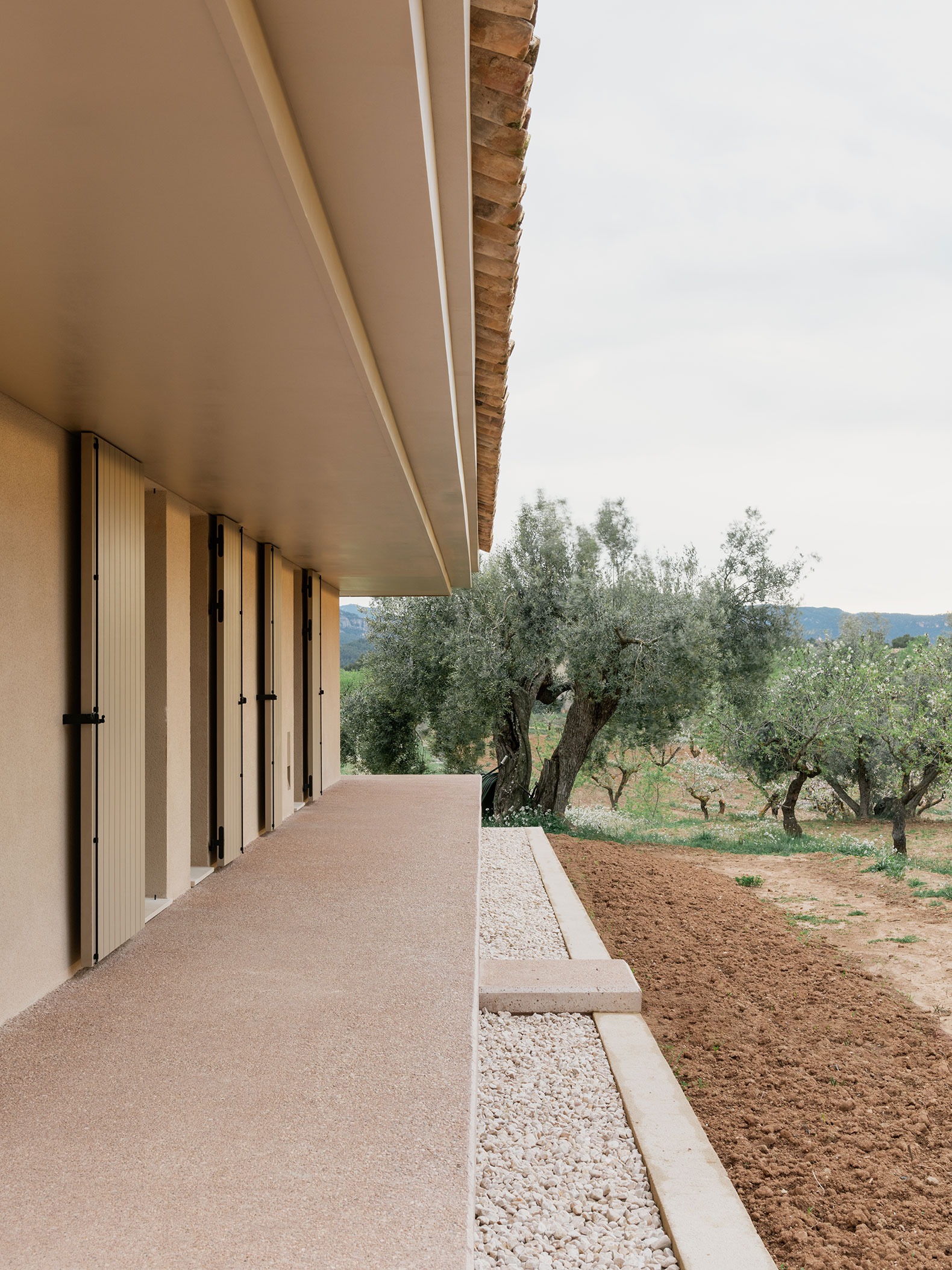
A key challenge was to create a home that felt intimate despite the openness of the site. The house remains low to the ground and nestles into its topography, using native vegetation to frame views and provide shade. Casa EF is ultimately a contemporary retreat rooted in local materiality, soft geometry, and calm spatial rhythm — a house in quiet dialogue with its landscape.
